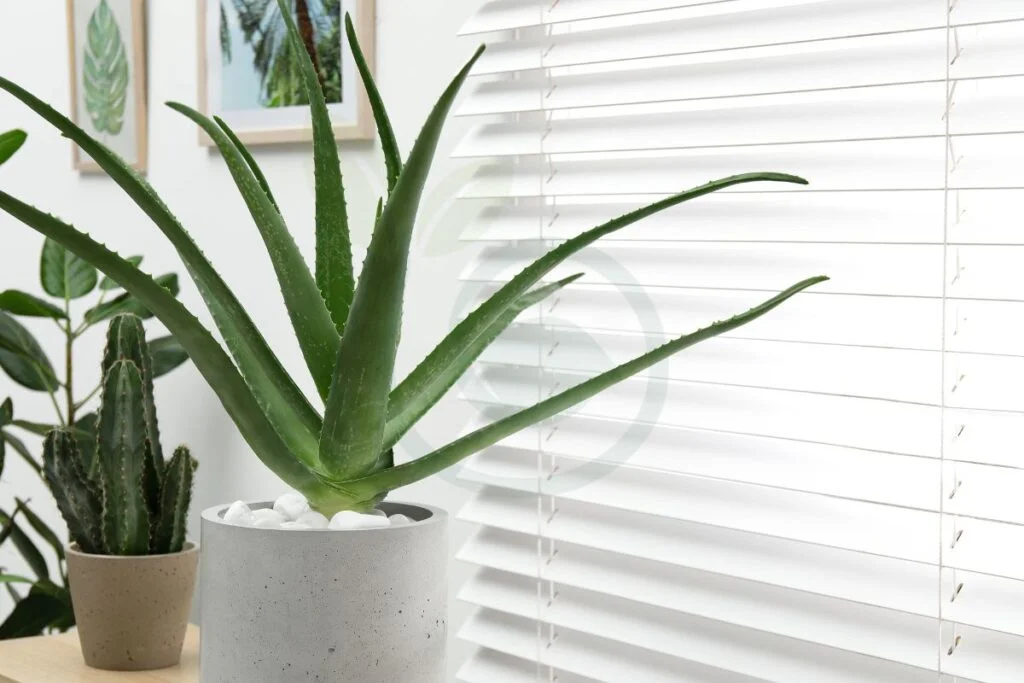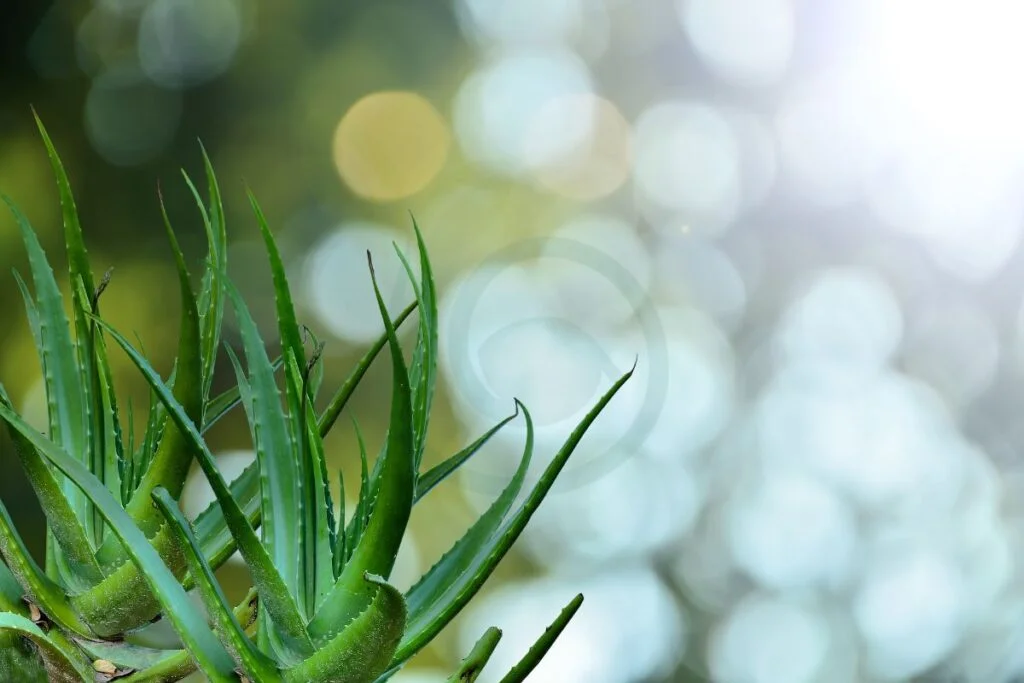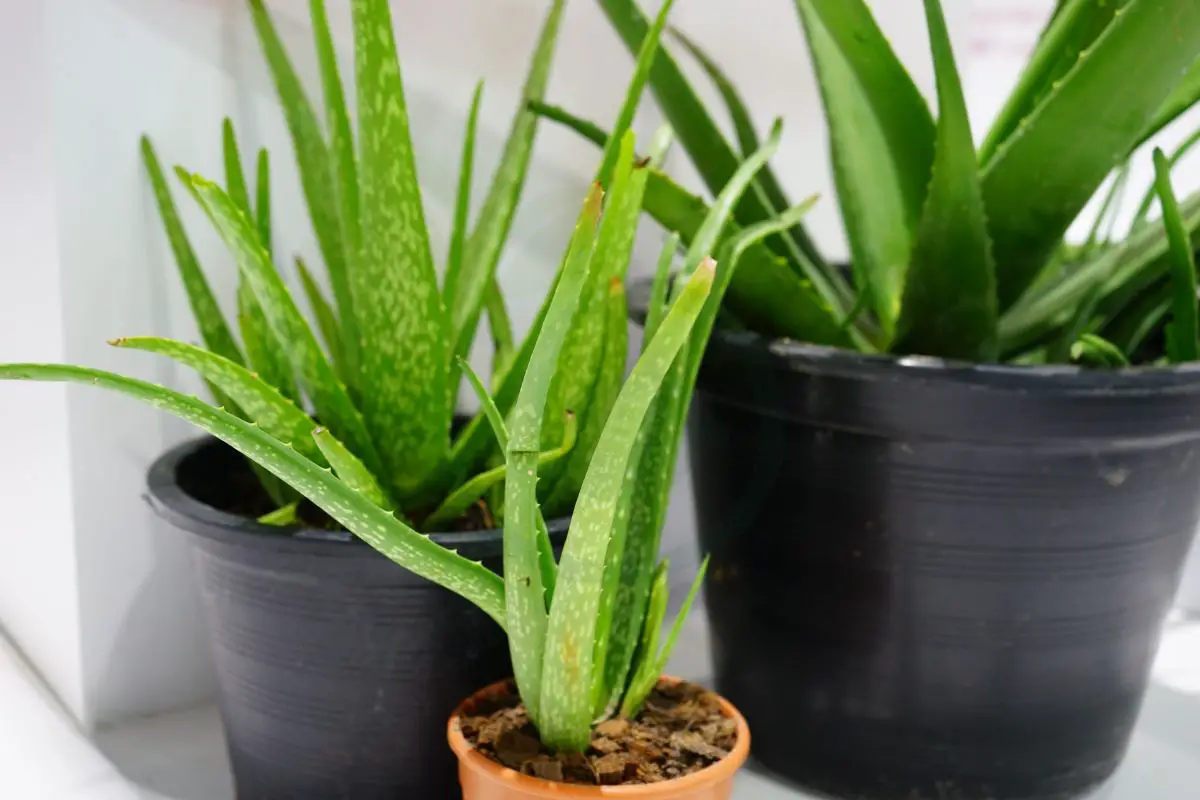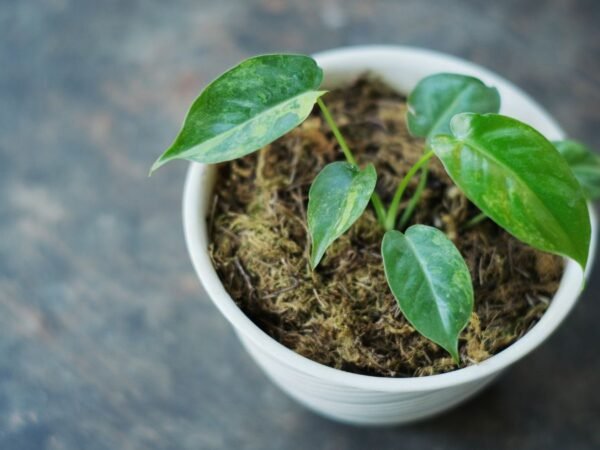Looking to add a touch of greenery to your indoor space with houseplants? Consider the versatile houseplant with fleshy leaves, aloe vera, perfect for indoors. With its air-purifying properties and potential healing benefits, aloe vera is a popular choice for both experienced gardeners and beginners alike.
Aloe vera has a rich historical background, dating back centuries for its medicinal uses. Today, it thrives as a low-maintenance plant that can enhance your living environment while providing potential health advantages. Stay tuned to discover the best practices for caring for your indoor aloe vera plant and unlock the secrets to harnessing its full potential in your home.
Key Takeaways
- Regularly check soil moisture: Ensure proper watering by checking the soil moisture level regularly to prevent overwatering or underwatering.
- Rotate plants for even growth: Rotate your aloe vera plants regularly to ensure all sides receive adequate sunlight, promoting even growth.
- Use well-draining soil: Opt for well-draining soil to prevent waterlogging, which can lead to root rot and other plant issues.
- Harvest aloe vera leaves carefully: When harvesting aloe vera leaves, cut them close to the base and use a sharp, clean knife for a smooth cut.
- Monitor for pests: Keep an eye out for common pests like mealybugs and scale insects, addressing any infestations promptly to protect your plants.
- Incorporate aloe vera in home decor: Explore creative ways to incorporate aloe vera plants in your home decor, adding a touch of greenery and freshness to your living spaces.
Aloe Vera Essentials
Plant Attributes
Aloe vera, also known as aloes, belongs to the family Asphodelaceae and its botanical name is Aloe barbadensis miller. It originates from arid regions in Africa, Madagascar, and the Arabian Peninsula. When mature, aloe vera typically reaches a height of 24-39 inches. It thrives in bright sunlight but can tolerate partial shade. While aloe vera has numerous health benefits, it's important to note that its sap can be toxic if ingested by pets.
Ideal Soil
For optimal growth, use a well-draining sandy commercial mix for aloe vera. To create a suitable soil mixture at home, combine equal parts of sand and potting soil. Avoid using potting mixes with added fertilizer as this can lead to overfeeding, causing harm to the plant rather than promoting growth.
Proper Light
To ensure healthy growth, position your aloe plant in an area with bright indirect light. Rotate the plant occasionally to promote even exposure to sunlight on all sides. If you want your aloe vera to bloom, provide it with full sun exposure whenever possible.
Watering Guidelines
Due to its drought-tolerant nature, aloes require minimal watering. Allow the topsoil of the plant to dry out completely between waterings to prevent overwatering and root rot. Ensure that the containers have adequate drainage holes to allow excess water to escape easily.
Indoor Cultivation Tips
Temperature Control
- Protect aloe vera from temperatures below 40˚F to avoid damage.
- Bring plants indoors before night temperatures drop below 50˚F.
- Look for locations with day and night temperature fluctuations for optimal growth.
Humidity Management
- Aloe vera does not require specific humidity levels indoors.
- Thrives in dry environments due to its adaptation to desert-like conditions.
- Choose locations with natural humidity for healthy plant growth.
Fertilizing Basics
- Apply balanced houseplant fertilizer at half strength once a month.
- Limit fertilizer applications to a maximum of three times per year.
- Avoid over-fertilizing to prevent nutrient imbalances in aloe vera.
Aloe Vera Varieties
Blooming Selections
Understanding the bloom time and flower color of aloe vera is essential for plant enthusiasts. Aloe vera typically blooms in vibrant hues of orange, red, or yellow, adding a pop of color to indoor spaces. Providing full sun exposure can help stimulate blooming in aloe vera plants, ensuring they thrive and produce beautiful flowers. The blooming season of aloe vera usually occurs during the summer months when sunlight levels are at their peak.
Houseplant Choices
Considered an ideal houseplant for homes with bright sunny windows, aloe vera thrives in well-lit areas. Its adaptability to indoor conditions makes it a popular choice among plant lovers looking for low-maintenance greenery. Apart from its aesthetic appeal, aloe vera also offers air-purifying benefits, improving indoor air quality and creating a healthier living environment.
- Benefits:
- Thrives in bright sunlight
- Low maintenance requirements
- Improves indoor air quality
Hardy Types
Exploring different hardy types of aloe vera allows plant enthusiasts to cater to their specific preferences. Choosing aloe vera varieties based on their hardiness zones ensures that the plants can withstand the local climate conditions effectively. Selecting aloe vera species known for their resilience against diverse environmental factors guarantees successful indoor cultivation.
- Aloe Vera Varieties:
- Aloe barbadensis miller (Aloe Vera)
- Aloe arborescens (Torch Aloe)
- Aloe brevifolia (Short-leaved Aloe)
- Hardiness Zones:
- Zone 9: Suitable for regions with mild winters
- Zone 10: Thrives in warmer climates
- Zone 11: Ideal for tropical environments
Planting and Repotting

Choosing Containers
- Select containers with adequate drainage holes for aloe vera.
- Choose containers based on the plant's mature size and growth habits.
- Opt for containers that allow for easy repotting and plant care.
Soil Mixture
- Create a well-draining soil mixture for aloe vera using sand and potting soil.
- Avoid heavy or water-retentive soils that can lead to root rot.
- Ensure the soil mixture provides good aeration for healthy root development.
Repotting Steps
- Repot aloe vera when it outgrows its current container.
- Gently remove the plant from its pot and inspect the roots.
- Choose a slightly larger pot with proper drainage for repotting aloe vera.
Propagation Techniques
Offsets Method
Propagate aloe vera by using offsets or "pups" produced by the mother plant. Separate these offsets carefully from the main plant using a sharp, sterile tool. Plant them in a well-draining soil mix to ensure proper growth and provide adequate care for their development.
Division Method
Divide mature aloe vera plants to create new individual ones. Ensure each division has roots attached when separating the plant into sections. Replant these divided sections in suitable containers filled with well-draining soil to support their growth.
Encouraging Bloom
Light Requirements
Aloe vera thrives in bright indirect light for optimal growth and blooming. Direct sunlight can scorch its leaves. Place your aloe vera near a window where it can receive ample sunlight without being exposed to harsh rays. Inadequate light can lead to stunted growth and a lack of flowering.
To prevent leggy growth, ensure your aloe vera receives sufficient bright indirect light throughout the day. Leggy growth refers to when the plant stretches out in search of more light, resulting in weak stems and sparse foliage. Positioning your plant near an east or west-facing window typically provides the right balance of light intensity.
Feeding Schedule
Establishing a feeding schedule is crucial for promoting blooming in aloe vera plants. Use a balanced houseplant fertilizer to provide essential nutrients for healthy growth. Feed your aloe vera at half strength once a month during the growing season, usually from spring to early fall.
Monitor how your plant responds to feeding by observing its overall health and growth patterns. If you notice signs of nutrient deficiencies such as yellowing leaves or slow growth, consider adjusting the feeding frequency accordingly. A well-fed aloe vera plant is more likely to produce vibrant blooms and remain robust throughout the year.
Pest and Problem Management

Identifying Pests
Aloe vera plants are susceptible to common pests such as spider mites, mealybugs, and aphids. Look for webbing or sticky residue on the leaves, which indicates a pest problem. Implement organic pest control methods like neem oil or insecticidal soap to protect your aloe vera.
Common Issues
Overwatering is a frequent issue that can lead to root rot in aloe vera plants. Ensure the soil dries out between watering to prevent this problem. Yellowing leaves may indicate overwatering, while brown mushy roots signal root rot. Regularly check the plant's moisture levels and adjust watering accordingly.
Harvesting Aloe Vera
Cutting Leaves
To safely cut aloe vera leaves, ensure to use a sharp, clean knife for precision. This promotes plant health and encourages regrowth. Implement proper cutting techniques to maintain the vitality of your potted aloe plant.
Gel Extraction
Extracting aloe vera gel from freshly cut leaves is essential for various applications. The gel can be utilized for skincare, sunburn relief, or hair care purposes. Store the extracted gel in airtight containers to preserve its freshness for future use.
Aloe Vera in Home Decor
Placement Ideas
When placing aloe vera in your home, ensure it receives adequate light and is kept at a suitable temperature for its growth. Choose spots near windows or areas with natural light to promote its development. Incorporate aloe vera into your decor to enjoy both its aesthetic appeal and health benefits.
- Optimal growth requires adequate light and suitable temperature.
- Place aloe vera near windows or well-lit areas for better development.
- Aloe vera not only enhances the aesthetics but also offers health advantages.
Companion Plants
Pairing aloe vera with suitable companion plants can create visually appealing indoor plant arrangements. Select plants that share similar requirements for light exposure and watering schedules to ensure harmonious growth alongside your aloe vera. This combination can elevate the overall look of your indoor space.
- Choose companion plants with matching light and water needs.
- Create visually pleasing indoor plant arrangements with compatible companions.
- Pairing aloe vera with suitable plants enhances the overall aesthetic of your space.
Closing Thoughts
Incorporating aloe vera into your indoor plant collection offers numerous benefits. From its air-purifying properties to its easy maintenance and versatile uses, aloe vera is a must-have plant for any home. By following the cultivation tips, exploring different varieties, mastering planting techniques, and managing pests effectively, you can enjoy the beauty and functionality of aloe vera plants in your living space. Remember to harvest with care and integrate aloe vera creatively into your home decor for a refreshing touch of greenery.
Now that you've gained insights into cultivating and utilizing aloe vera indoors, it's time to put your knowledge into action. Start by selecting the right variety for your space, implementing the cultivation tips shared, and incorporating aloe vera into your home decor. Share your newfound expertise with fellow plant enthusiasts and continue exploring the world of indoor gardening for a greener, healthier living environment.
Frequently Asked Questions
What are the essential care tips for growing Aloe Vera indoors?
Aloe Vera thrives in bright, indirect light and well-draining soil. Water sparingly, allowing the soil to dry out between waterings. Avoid overwatering to prevent root rot. Ensure good air circulation around the plant.
How can I propagate Aloe Vera plants successfully?
Propagate Aloe Vera through division or offsets. Carefully remove pups from the mother plant and allow them to dry before planting in a well-draining mix. Keep the new plants in indirect light until established.
What are common pests that affect Aloe Vera plants, and how can I manage them?
Common pests include mealybugs and spider mites. To manage, gently wipe leaves with a damp cloth to remove pests. Use neem oil or insecticidal soap for severe infestations. Isolate infected plants to prevent spreading.
When is the best time to harvest Aloe Vera gel for its benefits?
Harvest mature leaves when they are at least 8 inches long. Cut leaves close to the base using a sharp, clean knife. Allow the yellow sap (latex) to drain before filleting the leaf and extracting the clear gel for use.
How can I incorporate Aloe Vera into my home decor effectively?
Display potted Aloe Vera plants on windowsills or shelves with ample sunlight. Use decorative pots that complement your interior style. Consider grouping multiple plants together for a visually appealing arrangement while enjoying their air-purifying benefits.
Image Source: Paid image from CANVA



